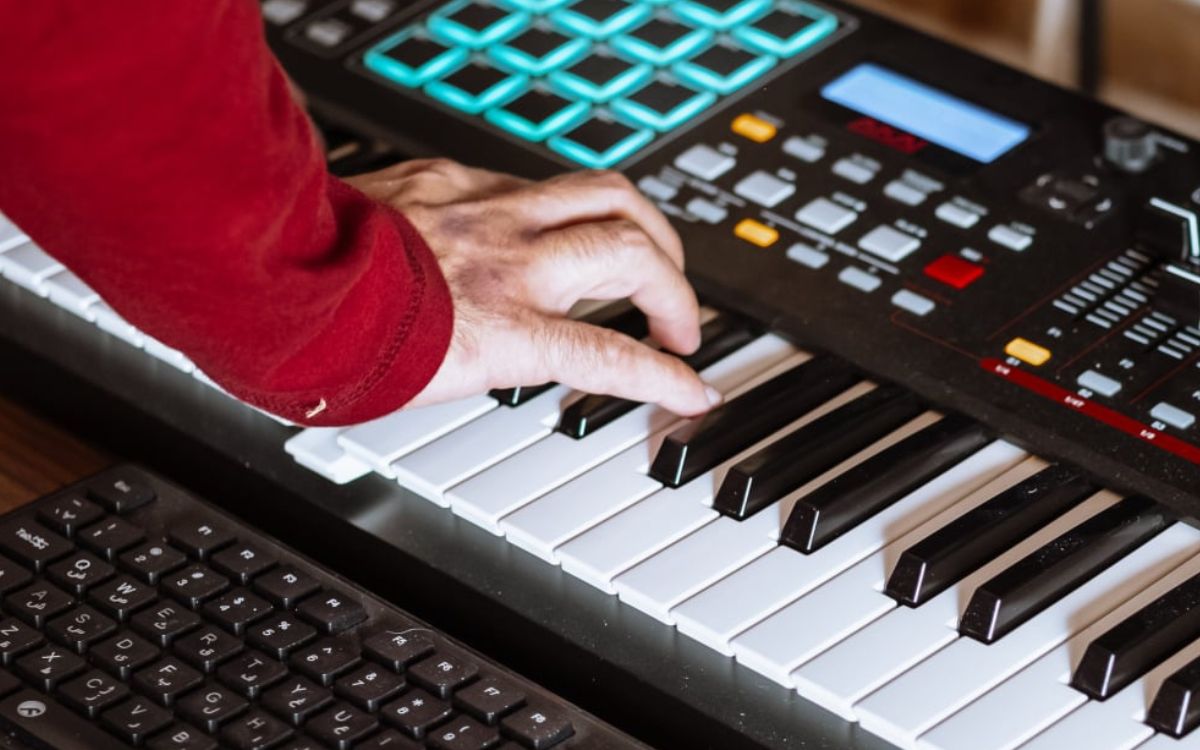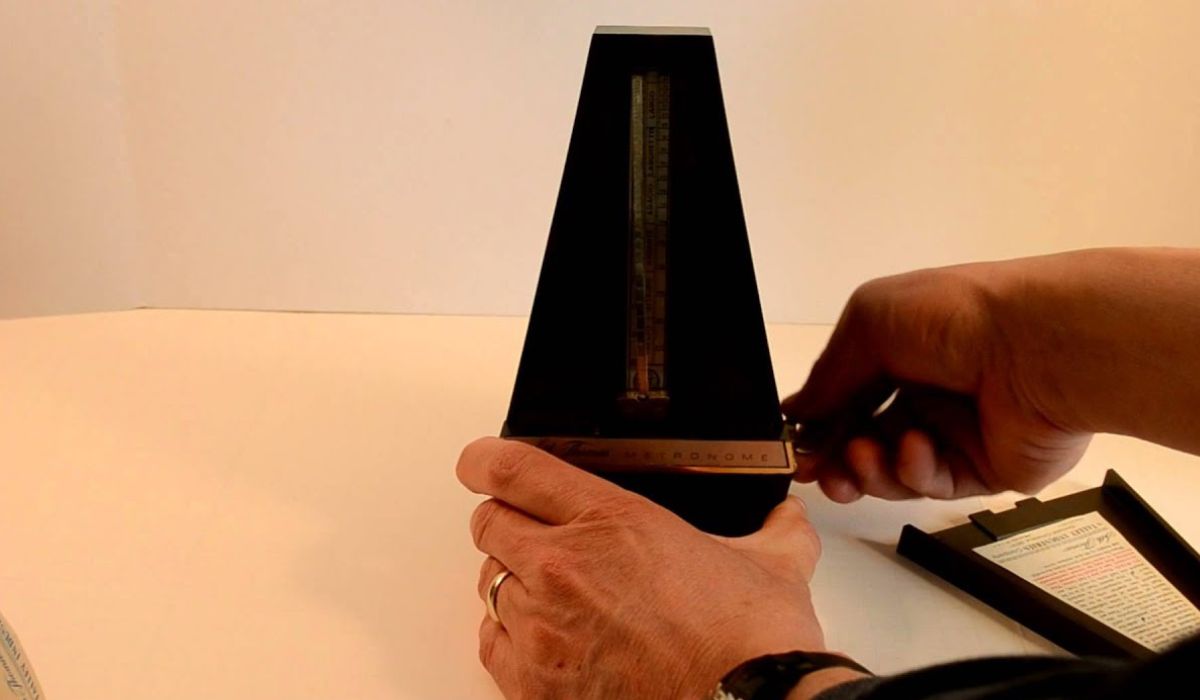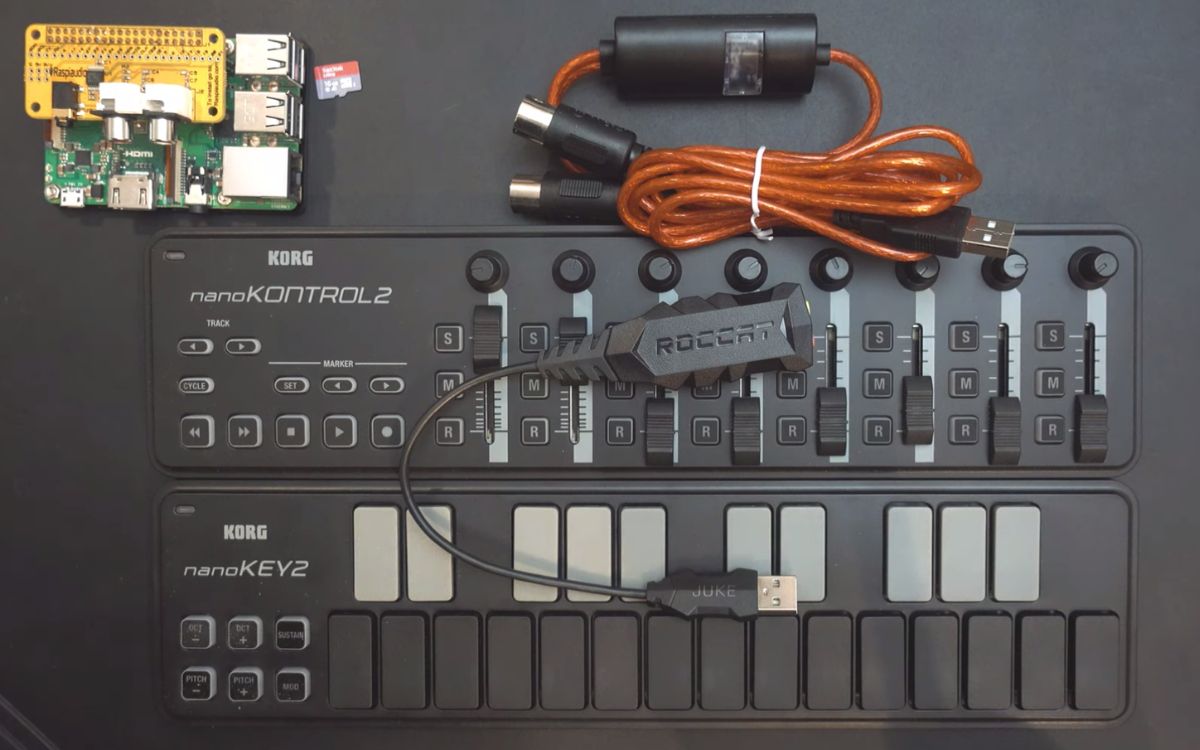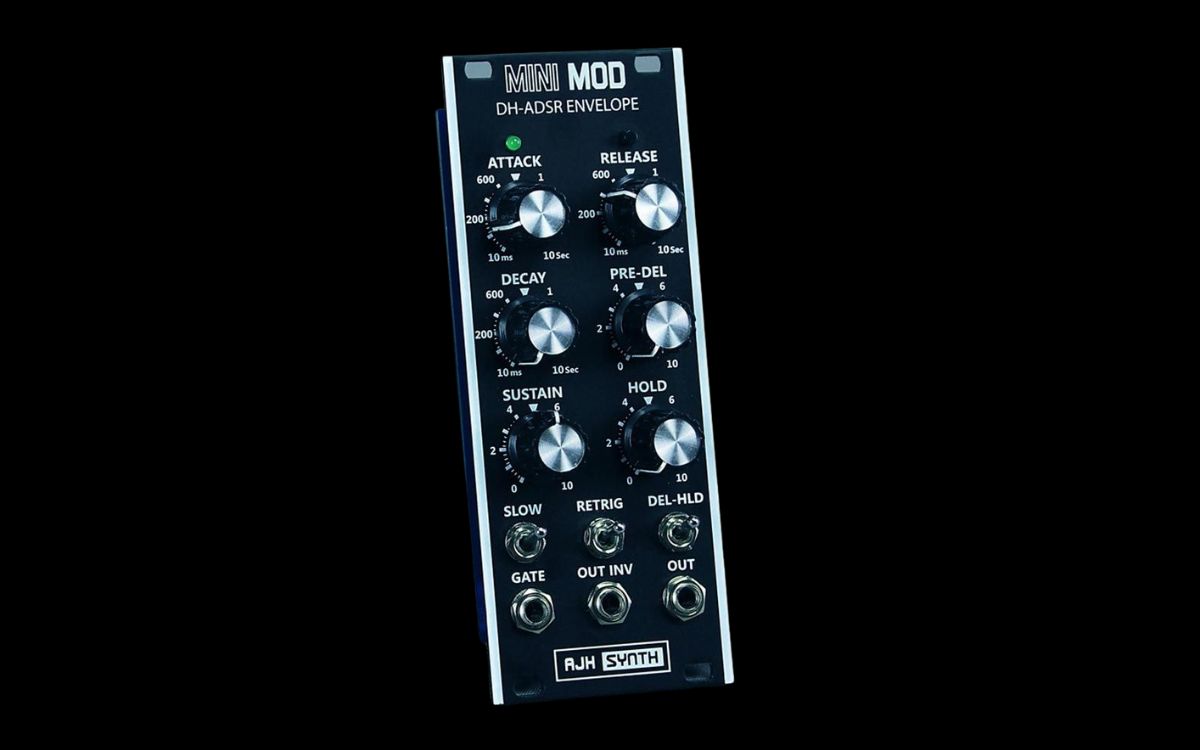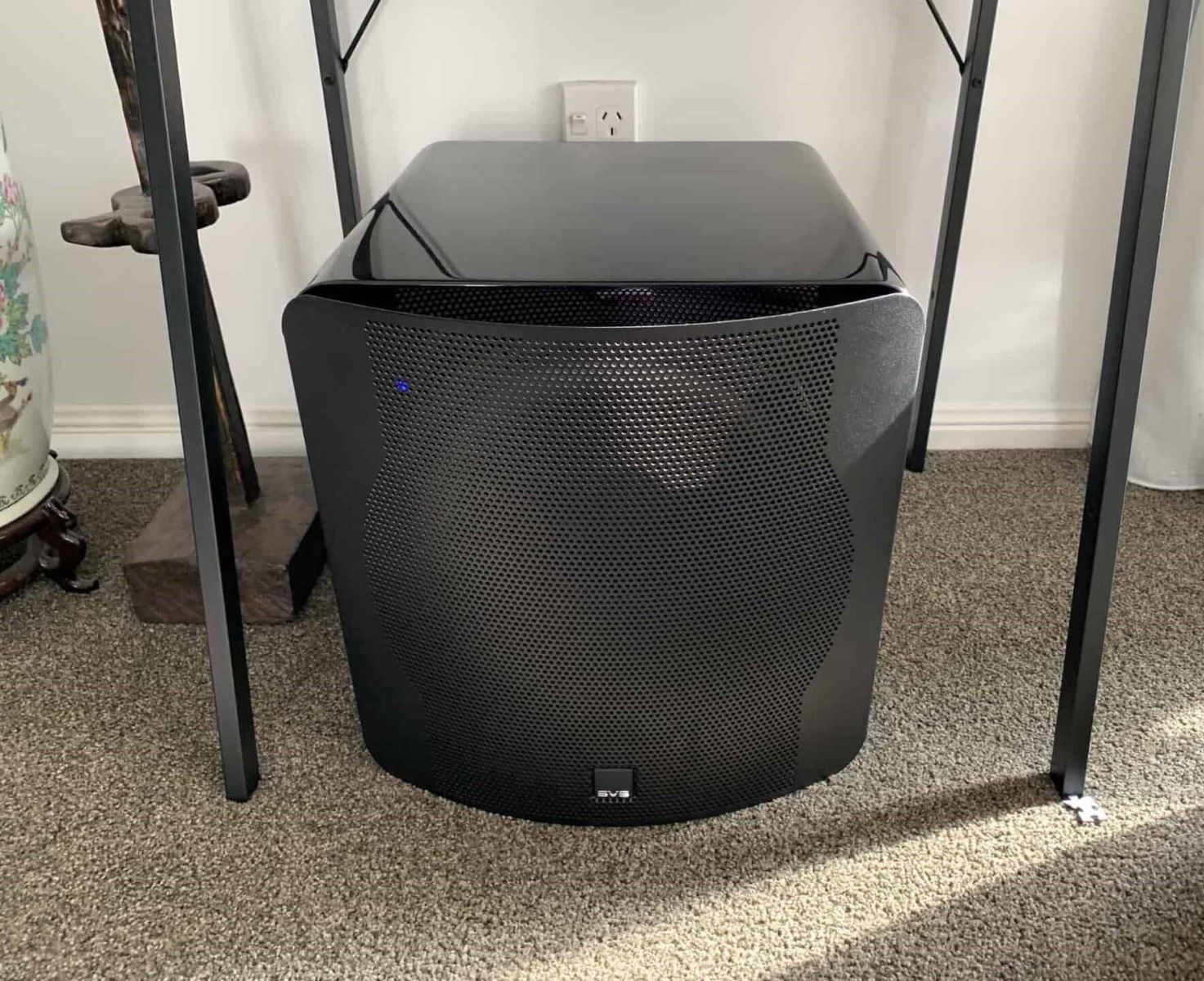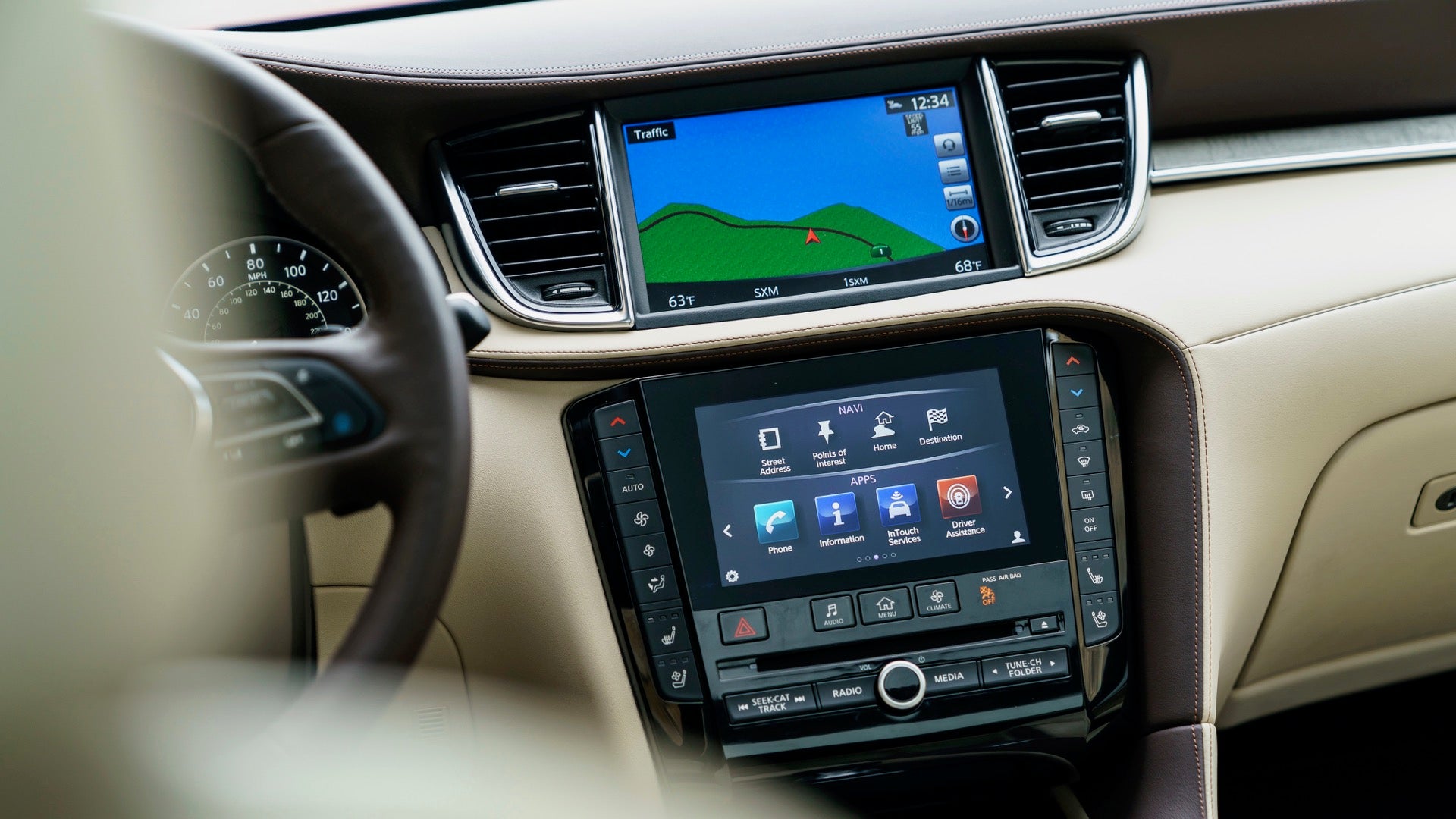Home>Instruments>Synthesizer>How To Fix A Synthesizer That Freezes


Synthesizer
How To Fix A Synthesizer That Freezes
Modified: February 22, 2024
Learn how to fix a freezing synthesizer and get it back in tune with our easy-to-follow troubleshooting guide. Don't let technical issues hold you back from creating amazing music!
(Many of the links in this article redirect to a specific reviewed product. Your purchase of these products through affiliate links helps to generate commission for AudioLover.com, at no extra cost. Learn more)
Table of Contents
Introduction
Synthesizers are powerful musical instruments that allow musicians and producers to create a wide range of sounds and textures. However, like any electronic device, synthesizers can sometimes encounter issues, one of which is freezing. Synthesizer freezing can be frustrating and can interrupt your creative process, but it doesn’t have to be a permanent problem.
In this article, we will explore common causes of synthesizer freezing and provide you with step-by-step troubleshooting techniques to help you fix the issue. Whether you are a seasoned synthesizer enthusiast or a beginner, these tips will help you get your synthesizer back to its optimal performance.
From hardware malfunctions to software glitches, there are several potential causes for a frozen synthesizer. It’s important to identify the underlying problem to effectively troubleshoot and resolve the issue. By following the suggestions in this article, you can save time and potentially avoid costly repairs or replacement of your synthesizer.
But before we dive into the solutions, it’s important to emphasize that if you are unsure about the cause of the freezing or if these troubleshooting steps don’t resolve the issue, it may be best to consult a professional technician or contact the manufacturer for assistance.
Common Causes of Synthesizer Freezing
Synthesizer freezing can occur due to various reasons. Understanding the common causes can help you narrow down the issue and find an appropriate solution. Here are some of the most common causes of synthesizer freezing:
- Hardware Malfunction: One of the primary causes of synthesizer freezing is a hardware malfunction. This could be due to a faulty power supply, damaged cables, or internal components that are not working properly. Physical damage to the synthesizer, such as a damaged keybed or control panel, can also lead to freezing.
- Software Glitches: Another common cause of synthesizer freezing is software glitches. This can happen if the firmware or operating system of the synthesizer is outdated or if there are bugs in the software. In some cases, incompatible software or conflicting programs running alongside the synthesizer software can also cause freezing.
- Overheating: Synthesizers generate heat during operation, and if they don’t have adequate ventilation or if they are exposed to high temperatures, they can overheat. Overheating can cause the synthesizer to freeze or shut down to protect itself from damage.
- Power Issues: Insufficient power supply or fluctuating power can lead to synthesizer freezing. If the synthesizer is not receiving stable power or if there are power surges, it can cause the system to freeze or behave unpredictably.
- Connection Problems: Synthesizer freezing can also occur due to faulty or loose connections. If the cables connecting the synthesizer to external devices or audio interfaces are damaged or not properly plugged in, it can result in freezing or intermittent audio output.
It’s important to note that synthesizer freezing can be a result of a combination of these factors or even other less common causes. Therefore, it may require some troubleshooting to pinpoint the exact issue and resolve it effectively.
Basic Troubleshooting Steps
When your synthesizer freezes, there are a few basic troubleshooting steps you can take to try and resolve the issue before delving into more advanced solutions. These steps can help identify any minor issues that could be causing the freezing. Here are some basic troubleshooting steps to consider:
- Restart the Synthesizer: Sometimes, a simple restart can fix minor software glitches or temporary issues. Power off your synthesizer, wait for a few seconds, and then power it back on. Check if the freezing issue persists.
- Disconnect External Devices: If you have any external devices or MIDI controllers connected to your synthesizer, disconnect them one by one and check if the freezing still occurs. Sometimes, compatibility issues or communication problems with external devices can cause freezing.
- Check for Firmware Updates: Manufacturers often release firmware updates to address bugs and improve the performance of their synthesizers. Check the manufacturer’s website or the product manual to see if there are any firmware updates available for your synthesizer. Updating the firmware can resolve freezing issues caused by software bugs.
- Inspect Cables and Connections: Examine the cables connecting your synthesizer to other devices or audio interfaces. Ensure that they are not damaged and are securely plugged in. Faulty or loose connections can lead to freezing or intermittent audio output.
- Test on a Different Power Outlet: Sometimes, power supply issues can cause synthesizer freezing. Plug your synthesizer into a different power outlet or use a power conditioner to provide stable power and see if the freezing persists.
These basic troubleshooting steps can help you identify and resolve common issues causing synthesizer freezing. If the freezing issue persists after trying these steps, you may need to proceed with more advanced troubleshooting techniques or seek professional assistance.
Resetting the Synthesizer
If basic troubleshooting steps didn’t resolve the freezing issue, you may try resetting your synthesizer. Resetting the synthesizer can help restore its settings to default and clear any temporary glitches that may be causing the freezing. Here’s how you can reset your synthesizer:
- Refer to the User Manual: Consult the user manual or documentation provided by the manufacturer to find the specific reset procedure for your synthesizer. Different synthesizer models may have different reset methods.
- Perform a Factory Reset: In most cases, the manufacturer will provide a factory reset option to restore the synthesizer to its original settings. This can often be done through a combination of buttons or a menu option. Follow the instructions carefully and proceed with the factory reset.
- Backup Data (if applicable): Before performing a factory reset, it’s important to note that it will erase all user settings and data. If you have any custom patches, sounds, or settings that you want to keep, make sure to back them up using the provided backup options in the synthesizer’s software or firmware.
- Execute the Reset: Once you are ready to proceed, initiate the factory reset as per the manufacturer’s instructions. It may involve pressing specific buttons, holding them for a certain duration, or navigating through menu options. Follow the on-screen prompts or instructions to perform the reset.
- Test the Synthesizer: After the reset is complete, power on your synthesizer and check if the freezing issue has been resolved. Test different functions and features to ensure that the synthesizer is functioning properly.
Resetting the synthesizer can often help clear any software or configuration issues that may be causing freezing. However, it’s important to note that a reset should be done with caution as it will erase any customized settings or data. If the freezing issue persists even after the reset, consider exploring other troubleshooting options or seeking professional assistance.
Updating Firmware
If your synthesizer continues to freeze even after basic troubleshooting and resetting, it’s worth considering updating the firmware. Firmware updates are released by manufacturers to address bugs, improve performance, and introduce new features. Updating the firmware can often resolve freezing issues caused by software glitches. Here’s a step-by-step guide on how to update the firmware of your synthesizer:
- Check the Manufacturer’s Website: Visit the manufacturer’s website and navigate to the support or downloads section. Look for firmware updates specifically made for your synthesizer model. Download the latest firmware update file compatible with your synthesizer.
- Read the Instructions: Once you have downloaded the firmware update file, carefully read the instructions provided by the manufacturer. Different synthesizers may have different update procedures, so it’s crucial to understand the process specific to your synthesizer model.
- Prepare the Synthesizer: Before updating the firmware, ensure that your synthesizer is connected to a stable power supply and backup any important data or settings. It’s crucial to protect your synthesizer from power cuts or interruptions during the firmware update process.
- Follow Firmware Update Procedure: Connect your synthesizer to your computer using a USB cable or any other designated method required for the firmware update. Follow the instructions provided by the manufacturer to initiate the firmware update process. This may involve running a firmware update utility or using specialized software provided by the manufacturer.
- Wait for the Update to Complete: During the firmware update process, avoid interrupting the process or turning off the synthesizer. Let the update run its course, as interrupting the update can cause permanent damage to your synthesizer.
- Verify the Update: Once the update is complete, restart your synthesizer and check if the freezing issue has been resolved. Test different functions and verify that the synthesizer is functioning correctly. If the freezing issue persists, consider exploring other troubleshooting options or contacting the manufacturer for assistance.
Updating the firmware can often fix freezing issues by addressing bugs or improving the stability of the operating system. However, it’s important to follow the instructions provided by the manufacturer carefully and ensure a stable power connection to avoid any risks during the firmware update process.
Checking Power Supply
Power supply issues can often cause synthesizer freezing or erratic behavior. It’s essential to ensure that your synthesizer is receiving stable and adequate power to operate properly. Here are some steps to check the power supply of your synthesizer:
- Verify Power Source: Ensure that the power outlet you are using is working correctly and providing a stable power supply. Plug in another device to the same outlet to verify if there are any issues with the power source.
- Use a Dedicated Outlet: Avoid using power strips or extension cords that may not provide sufficient power or may introduce electrical interference. Plug your synthesizer directly into a dedicated power outlet, if possible.
- Check Power Cable: Examine the power cable of your synthesizer for any signs of damage, such as frayed wires or loose connections. If you identify any issues, replace the power cable with a new one recommended by the manufacturer.
- Test with a Different Power Cable: To rule out potential issues with the power cable, try using a different power cable that is known to be working correctly. Test your synthesizer and see if the freezing issue persists.
- Monitor Power Fluctuations: Use a power monitor or voltage regulator to check if there are any power fluctuations or surges. Unstable power supply can cause synthesizer freezing or unexpected behavior. If power fluctuations are identified, consider using a power conditioner or uninterruptible power supply (UPS) to stabilize the power supply.
- Consult a Professional Electrician: If you suspect that there may be issues with the electrical wiring in your home or studio, it’s advisable to consult a professional electrician. They can assess and address any electrical problems that may be affecting the performance of your synthesizer.
By checking the power supply and ensuring stable power, you can eliminate power-related issues that may cause your synthesizer to freeze. If the freezing issue persists even after verifying the power supply, continue with other troubleshooting steps or consider seeking professional assistance.
Checking Connections
Faulty or loose connections can contribute to synthesizer freezing or intermittent performance. It’s crucial to inspect the various connections of your synthesizer to ensure they are properly secured and functioning correctly. Here are some steps to check the connections of your synthesizer:
- Cables and Plugs: Examine the cables and plugs that connect your synthesizer to external devices, such as speakers, audio interfaces, or MIDI controllers. Look for any visible signs of damage, such as frayed wires or bent pins. Replace any damaged cables or plugs as necessary.
- Secure Connections: Ensure that all cables are firmly and securely plugged into their respective ports. Loose connections can cause signal interruptions or inadequate power supply, leading to freezing or malfunctioning of your synthesizer.
- Clean Connectors: Over time, connectors can accumulate dust, dirt, or oxidation, which can undermine their performance. Use a gentle brush, compressed air, or electronic contact cleaner to clean the connectors of your synthesizer and other connected devices. Ensure that power is turned off and any batteries are removed before performing any cleaning procedures.
- Test Different Cables: If you suspect that a particular cable may be causing the freezing issue, try using a different cable to connect your synthesizer to the external device. This will help determine if the original cable is faulty or incompatible.
- Check MIDI Connections: If you use MIDI connectivity, verify the MIDI connections between your synthesizer and other MIDI devices. Ensure that MIDI cables are plugged in correctly and securely, and that the MIDI channels and settings are properly configured.
- Inspect Internal Connections: If you feel comfortable doing so, you can open up your synthesizer and inspect the internal connections. Ensure that any ribbon cables, connectors, or circuit boards are properly seated and not loose or damaged. Be cautious and refer to the manufacturer’s documentation or consult a professional if needed.
By ensuring that all connections are secure and clean, you can minimize the possibility of connection-related issues causing your synthesizer to freeze. If the freezing issue persists after verifying the connections, explore further troubleshooting options or seek professional assistance.
Cleaning the Synthesizer
Regular cleaning of your synthesizer is essential to maintain its performance and prevent issues like freezing. Dust, dirt, and debris can accumulate on the surface and inside the various components of the synthesizer, potentially causing it to malfunction. Here are some steps to effectively clean your synthesizer:
- Power Off and Unplug: Before starting the cleaning process, make sure to turn off your synthesizer and unplug it from the power source. This will help prevent any electrical hazards during the cleaning procedure.
- Exterior Cleaning: Use a soft, lint-free cloth slightly dampened with water or a mild cleaning solution to gently wipe down the exterior surfaces of the synthesizer. Be cautious not to use excessive moisture, and avoid getting liquids into any openings or controls.
- Keys and Control Surfaces: To clean the keys and control surfaces, use a soft cloth or a small brush to remove any dirt or debris. For stubborn grime, you can lightly dampen the cloth with water or use a specialized cleaning solution designed for musical instruments. Avoid using harsh chemicals that may damage the surfaces.
- Display Screens and Panels: If your synthesizer has display screens, use a microfiber cloth to gently remove fingerprints or smudges. Additionally, clean control panels and buttons using a soft cloth or a cotton swab slightly dampened with a mild cleaning solution, if necessary.
- Internal Cleaning: If you are comfortable doing so, you can perform light internal cleaning to remove dust and debris that may have accumulated inside the synthesizer. Use a can of compressed air or an electronic-safe brush to remove dust from the internal components, following the manufacturer’s guidelines and precautions.
- Allow Drying Time: After cleaning, allow your synthesizer to air dry before reconnecting it and powering it on. This will ensure that no moisture is left that could potentially cause damage when the synthesizer is in operation.
Regular cleaning of your synthesizer not only helps prevent freezing issues but also prolongs its lifespan and maintains its overall performance. However, exercise caution during the cleaning process and refer to the manufacturer’s guidelines or consult a professional if you are uncertain about the cleaning procedures for your specific synthesizer model.
Dealing with Software/Operating System Issues
Software glitches or issues with the operating system can often lead to synthesizer freezing. Fortunately, there are several steps you can take to address these problems. Here’s how you can deal with software and operating system issues:
- Check for Updates: Ensure that your synthesizer’s software and operating system are up to date. Visit the manufacturer’s website or use the provided software to check for any available updates or patches. Installing the latest updates can often resolve known software issues.
- Reinstall Synthesizer Software: If you suspect that the software itself may be causing the freezing, consider reinstalling the synthesizer software. Uninstall the software from your computer, restart the system, and then download and install the latest version of the software from the manufacturer’s website.
- Disable Background Programs: Running several programs simultaneously can strain system resources and potentially cause freezing. Close any unnecessary background programs, especially resource-intensive applications, before using your synthesizer. This can help free up system resources for optimal performance.
- Check for Conflicting Software: If you have recently installed any new software or plugins related to music production, check if they are causing conflicts with your synthesizer’s software. Disable or remove the newly installed software temporarily and test if the freezing issue persists.
- Scan for Malware and Viruses: Malware or viruses can disrupt the proper functioning of your synthesizer’s software and result in freezing or other issues. Run a thorough scan of your system with reliable antivirus software to detect and remove any potential threats.
- Consider Factory Reset: If all else fails and the freezing issue persists, you may consider performing a factory reset on your synthesizer’s software or operating system. Refer to the user manual or contact the manufacturer’s support for instructions specific to your synthesizer model.
Addressing software or operating system issues can often resolve freezing problems with your synthesizer. However, it’s important to follow the instructions provided by the manufacturer and exercise caution when making any changes to your system’s software.
Seeking Professional Help
If you have exhausted all basic troubleshooting steps and the freezing issue with your synthesizer persists, it may be time to seek professional help. Professional technicians specialized in synthesizers can provide expert assistance and guidance to diagnose and fix the problem. Here are some steps you can take when seeking professional help:
- Contact the Manufacturer: Reach out to the manufacturer of your synthesizer and inquire about their customer support services. They may have dedicated support lines or online channels where you can seek assistance. Provide them with detailed information about the issue you are facing, including any troubleshooting steps you have already tried.
- Authorized Service Centers: Check if there are any authorized service centers in your area that specialize in repairing synthesizers. These centers have trained technicians who are experienced in diagnosing and fixing issues with specific synthesizer models. Contact the service center and inquire about their services and repair processes.
- Online Communities and Forums: Join online communities or forums dedicated to synthesizers and seek advice from fellow enthusiasts or professionals. They may have encountered similar issues with their synthesizers and can provide guidance or recommend local technicians who can help with your specific problem.
- Local Music Stores: Visit local music stores that sell synthesizers and inquire if they offer repair or maintenance services. They may have technicians on staff or can recommend reputable professionals who can assist with your synthesizer issue.
- Consult Professional Technicians: If you are unable to find a manufacturer’s service center or authorized technicians, consider consulting independent professional technicians who specialize in synthesizer repair. Research their credentials, read reviews, and ensure that they have expertise in fixing the specific make and model of your synthesizer.
Professional help can be invaluable when dealing with persistent issues or complex problems with your synthesizer. They have the knowledge, tools, and experience to diagnose and resolve the root cause of the freezing issue, ensuring your synthesizer is restored to optimal performance.
Remember to communicate any previous troubleshooting steps you have taken and provide them with detailed information about the freezing problem. This will help them diagnose the issue more effectively and provide an appropriate solution.
Conclusion
Synthesizer freezing can be frustrating and disruptive to your creative process, but with the right troubleshooting techniques, you can effectively resolve the issue. By identifying and addressing common causes such as hardware malfunctions, software glitches, power supply issues, connection problems, or software/operating system issues, you can significantly improve the performance of your synthesizer.
Start with basic troubleshooting steps, such as restarting the synthesizer, checking connections, and updating firmware. If these steps don’t resolve the freezing issue, consider resetting the synthesizer and exploring software-related solutions like reinstalling software or checking for conflicts. Additionally, ensure that your power supply is stable and that your synthesizer is properly cleaned and maintained.
If you have exhausted all the troubleshooting steps and the freezing issue persists, it is advisable to seek professional help. Contact the manufacturer, authorized service centers, or professional technicians who have expertise in synthesizer repair. Their specialized knowledge can help diagnose and fix the problem efficiently.
Remember, prevention is key. Regularly update your software and firmware, clean your synthesizer, and take care of the power supply and connections to avoid future freezing issues. By maintaining your synthesizer properly, you can ensure its longevity and optimal performance.
Overall, with a blend of thorough troubleshooting, regular maintenance, and professional assistance when needed, you can overcome freezing issues and continue to enjoy the full potential of your synthesizer for years to come.

